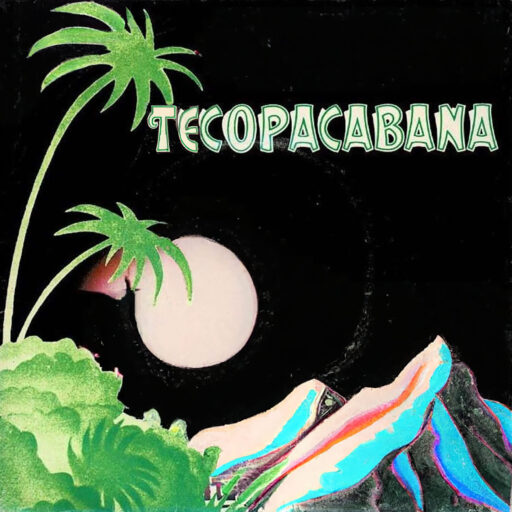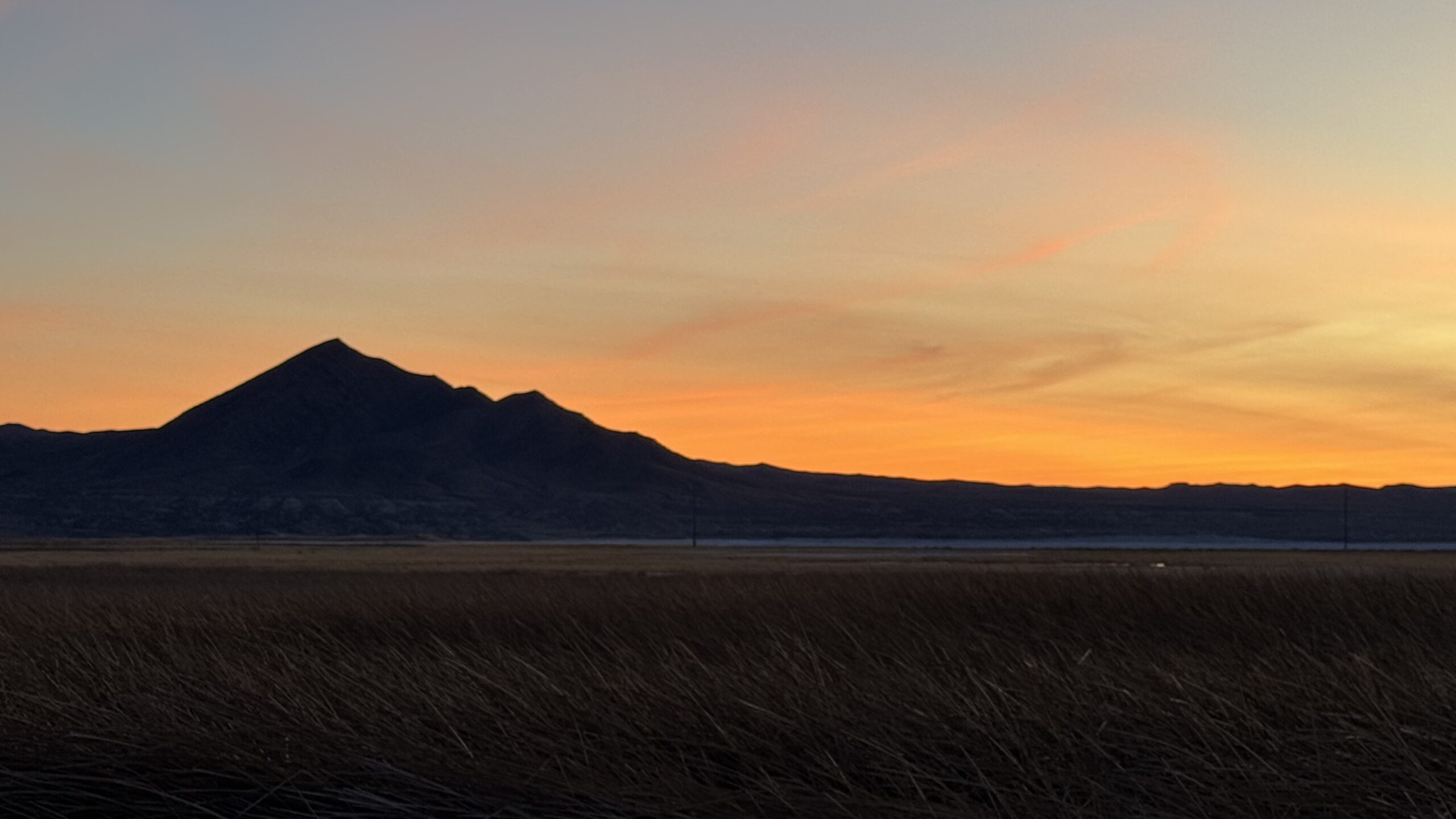At the edge of the Amargosa Basin, where the Mojave Desert blurs into Death Valley’s outer reaches, a small, spring-fed wetland carries the name of one of Tecopa’s mid-20th century settlers. Grimshaw Lake, barely still there, represents the way individuals leave their mark on a place — sometimes through enterprise, sometimes through accident, and often through persistence in a difficult landscape.
The lake was created in the mid-20th century when Edwin Lewis Grimshaw, an avid outdoorsman and hunter, constructed a low dam across a hot-spring-fed stream flowing from the Tecopa Mountains. His intention was simple: to attract ducks to the desert for hunting. Yet the act had a much broader consequence, producing a wetland oasis that would become an enduring feature in Inyo County’s desert geography.
From Yorkshire to the Mojave
The story of Grimshaw Lake is entwined with centuries of family history. Edwin Grimshaw was born in Missouri in 1892, the grandson of Jonathan and Eliza (Topham) Grimshaw, who had immigrated from Lancashire, England, as Mormon converts. Their migration carried them to Salt Lake City, part of the mid-19th-century wave of European settlers drawn westward by faith. But Jonathan lost his belief in the church, and the family resettled in Missouri, where Edwin’s parents — Jonathan Topham and Nannie (Major) Grimshaw — raised their children.
Edwin’s ancestry can be traced nine generations back to Edward and Dorothy (Raner) Grimshaw of Yorkshire, England, tying him to a deep lineage of migration and resettlement that mirrored the broader movement of families across the American West. By the time Edwin was an adult, many descendants of these early English families had spread across the Midwest and West, carving out livelihoods as the nation’s frontiers shifted.
A Life in Tecopa
In 1936, Edwin married Minnie (Bacon) McQueary in Los Angeles. Minnie had previously been married to Frank A. McQueary and brought children from that marriage into her new life with Edwin. By 1944, the couple had relocated to Tecopa, a tiny desert outpost with roots in mining but evolving into a community supported by hot springs tourism, roadside commerce, and the enduring flow of the Amargosa River.
It was here that Edwin Grimshaw became synonymous with the Tecopa Trading Post, the cornerstone of what residents today call “downtown Tecopa.” Period accounts place the building’s origins around 1942, when Grimshaw leased the original post and operated it as a trading post and bar. For locals, it was a vital hub — a place to purchase goods, trade stories, and gather in a community spread thin across desert homesteads and mining claims. For travelers, it offered one of the few stops for supplies and refreshment between Shoshone, Death Valley, and Nevada.
When the first building was lost to fire in the late 1940s, Grimshaw rebuilt on the same site. The second post, completed around 1949–50, stood sturdier than the first and became the anchor of Tecopa’s emerging town center. With its rustic construction and strategic location near the highway, the new trading post soon served as both commercial outpost and community living room.
The Trading Post’s Later Years
The Tecopa Trading Post survived long after Grimshaw’s time. By the 1970s, it had become a recognizable roadside stop in the desert, appearing in Desert Magazine advertisements under the banner of the “Tecopa Trading Post / Snake Room Bar / Death Valley Café.” During that period, the property was operated by Dr. H. Zellhoefer, who marketed it as a combined café, bar, and curio stop for tourists bound for Death Valley.
In later decades, the building continued to serve shifting functions, adapting as Tecopa’s economy transitioned from mining and roadside trade to tourism and hot springs recreation. Today, the historic structure houses Death Valley Brewing, giving new life to a building that has anchored the town for over 80 years.
As of 2025, the property is part of a 275-acre Downtown Tecopa assemblage listed for sale, including leased structures such as the post office and the brewery inside the historic trading-post building. Its next chapter remains uncertain, but its survival speaks to the durability of desert enterprise.
Tecopa Before the Grimshaws
By the time Edwin and Minnie arrived, Tecopa had already lived several lives. The area’s earliest known residents were Indigenous Southern Paiute communities, who relied on the Amargosa River, springs, and seasonal plant and animal cycles for survival. The very name “Tecopa” honors a Paiute leader whose people inhabited the eastern California desert.
In the 19th century, Tecopa became tied to mining. First, borax and silver drew prospectors and companies; later, talc and other minerals were extracted. Railroads came and went, leaving behind the grade that still cuts through the desert near Grimshaw Lake. The Old Spanish Trail, a trading route between New Mexico and California, had passed through the Amargosa Valley long before mining, linking Indigenous trade networks with colonial ones.
By the 1930s and 1940s, mining waned, and Tecopa’s economy shifted toward tourism. The hot springs — long used by Native communities — became commercialized as health retreats and roadside baths. Small entrepreneurs like Edwin Grimshaw filled the gaps with trading posts, motels, and bars, serving a mix of local miners, bathers, and the occasional traveler bound for Death Valley or Las Vegas.
Building the Lake
It was in this context that Grimshaw undertook his damming project. By blocking a small stream fed by a hot spring in the Tecopa Mountains, he created an artificial wetland that expanded across the desert floor. For a hunter, the lake offered promise of waterfowl. For the desert ecosystem, it became a refuge.
Today, Grimshaw Lake appears on maps and satellite images as a patch of water and marsh near Highway 127, just south of Tecopa Hot Springs. The Bureau of Land Management identifies it as part of a fragile desert ecosystem, vital for birds migrating along the Pacific Flyway. Marsh grasses, mud flats, and warm pools now define the landscape, supporting an array of species in an otherwise arid environment.
A Landscape of Layers
The creation of Grimshaw Lake represents only one chapter in the layered story of the Amargosa Basin. Long before Grimshaw’s dam, the springs were life-giving places for Paiute communities. Later, they guided Spanish traders and American settlers. In the early 20th century, they sustained miners and bathers.
Visitors today often compare the lake to Death Valley’s Badwater Basin, though Grimshaw Lake is far more alive with vegetation and birdlife. Some describe it as a desert oasis, one whose existence underscores the precarious balance of water, life, and settlement in the Mojave. Signs posted nearby remind travelers of the ecosystem’s fragility.
Legacy of a Settler’s Name
Though Edwin and Minnie Grimshaw left no direct descendants in Tecopa, the lake and the trading post together form their legacy. One reflects his pastime — hunting — and the other his role as a builder and community figure. Both endure as reminders of how individual settlers shaped Tecopa during its transition from mining camp to desert community.
The graves of Edwin and Minnie rest quietly in Tecopa Cemetery, alongside those of other settlers who tried, in different ways, to make a life in the valley. Their legacy, like the lake and the trading post, is subtle yet lasting — an example of how individual lives become interwoven with the history of place.
A Continuing Chapter
As Inyo County and federal agencies manage public lands around Tecopa, Grimshaw Lake remains a site of ecological importance. Meanwhile, the Tecopa Trading Post — a structure with roots in the 1940s, marketed in the 1970s as the Snake Room Bar and today housing Death Valley Brewing — once again awaits a new steward.
Together, they represent two sides of Tecopa’s story: the natural and the built, the wild and the cultivated, both carrying forward the name of Grimshaw into the 21st century.


Leave a Reply